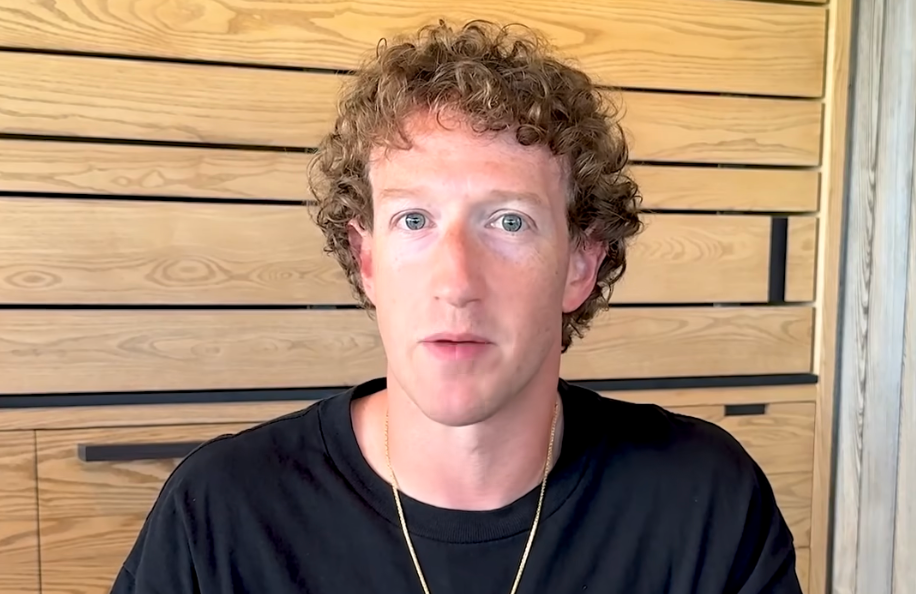
Meta employees are furious with the company’s newly announced content moderation changes that will allow users to say that LGBTQ+ people have “mental illness,” according to internal conversations obtained by 404 Media and interviews with five current employees. The changes were part of a larger shift Mark Zuckerberg announced Monday to do far less content moderation on Meta platforms.
“I am LGBT and Mentally Ill,” one post by an employee on an internal Meta platform called Workplace reads. “Just to let you know that I’ll be taking time out to look after my mental health.”
On Monday, Mark Zuckerberg announced that the company would be getting “back to our roots around free expression” to allow “more speech and fewer mistakes.” The company said “we’re getting rid of a number of restrictions on topics like immigration, gender identity, and gender that are the subject of frequent political discourse and debate.” A review of Meta’s official content moderation policies show, specifically, that some of the only substantive changes to the policy were made to specifically allow for “allegations of mental illness or abnormality when based on gender or sexual orientation.” It has long been known that being LGBTQ+ is not a sign of “mental illness,” and the false idea that sexuality or gender identification is a mental illness has long been used to stigmatize and discriminate against LGBTQ+ people.
Earlier this week, we reported that Meta was deleting internal dissent about Zuckerberg's appointment of UFC President Dana White to the Meta board of directors.
💡
Do you work at Meta? I would love to hear from you. Using a non-work device, you can message me securely on Signal at +1 202 505 1702.
Another thread on Meta’s internal Workplace site that has several hundred comments and more than a thousand reactions reads “[feedback] Sexual Orientation and Gender as a mental illness … I’d appreciate some more detail on: How the decision was made to update the policy, particularly given this does not reflect any mainstream scientific consensus; How the policy reflects our values and perspectives as a company, and whether these are different to the values we’ve expressed in the past; Who (if any) LGBT groups [internal or external] were consulted as part of this change.”
Ben Good, the head of Americas for the Core Policy Team at Meta, told employees in the thread that “our core values have not changed.”
“The changes to our Hateful Conduct policy seek to undo the mission creep that has made our rules too restrictive and too prone to over enforcement,” he wrote in one employee thread. “Reaffirming our core value of free expression means that we might see content on our platforms that people find offensive … yesterday’s changes not only open up conversation about these subjects, but allow for counterspeech on what matters to users.”
Five current Meta employees spoke to 404 Media and said that many Meta employees are furious about the changes, an assessment that appears to be accurate based on screenshots of several internal threads obtained by 404 Media.
“It’s total chaos internally at Meta right now,” one current employee told 404 Media.
“The entire thread of comments shared is dissent toward the new policy, save for one leader repeating Zuckerberg talking points. I’d call the mood shock and disbelief,” they added. “It’s embarrassment and shame that feels self-inflicted, different than mistakes the company has made in the past.”
“No one is excited or happy about these changes. And obviously the employees who identify as being part of the LGBTQ+ community are especially unhappy and feel the most unsupported in this,” another employee told 404 Media. “A small number of people are taking time off and are sharing that they are considering leaving the company due to this change.”
“Morale of fellow queer employees is in the absolute shitter, surprising no one,” a third employee told 404 Media.
One reply to the thread reads “I wish I could resign in protest, but I’ve already resigned.”
Other comments include:
- “I find it very hard to understand how explicitly carving out which groups of marginalized people can have what we otherwise classify hate speech directed at them will be beneficial for the communities we hope to build on our platforms.”
- “This change is unacceptable on all levels.”
- “Someone went into this policy and not only removed protection, they actually *doubled down* and made it explicitly okay. Absolutely wild.”
- “I had to reread the policy language many times to believe what I was seeing—a very clear statement that we’re okay with people attacking others based on their sexual orientation or gender identity. I cannot begin to fathom why we think this is acceptable or helpful to our community and our company’s mission. I’ve never felt so strongly that we’re on the wrong side of history. This is going to cause so much harm. Please reconsider this change.”
- “When I first joined this company, people would criticize me for working here all the time. I defended y’all time and time again, always anchoring that in the end we do try our best even if it doesn’t work out sometimes - but this? appalling.”
- “I think it’s clear that the policy team is not open to any feedback here and is committed to an ideological project that sacrifices some of our communities in order to achieve their goal,” one employee wrote. “Just call me a tranny and close the discussion here. At least it would be honest.”
Other employees pointed out that they could not find internal discussion about how the new changes were made. Several years ago, I visited Meta’s headquarters and sat in on a content policy meeting, which consisted of dozens of employees and lawyers discussing at length how specific rule changes would be made, who they would affect, and soliciting input from external nonprofits and experts. In the thread obtained by 404 Media, employees said they could not find information about how the policy was created and who was consulted.
“Did we miss a Policy Forum where we could hear the results of any research supporting this change and opinions of all?”
“I looked for one and couldn’t find it either,” another person replied.
“Can the policy team also address why the company did not have a response prepared for something that would clearly have such a significant impact internally and externally on employees/users who fall into these categories?” another said. A fourth said “Changes to Meta’s policy should be done thoughtfully, with considerable consultation from policy analyst, lawyers, and other subject matter experts. Those changes should have documented rationale, preferably available publicly. At the very least, Meta should be able to tell company employees why it is now acceptable to call a large number of them mentally ill or to refer to them as ‘property’ or to refer to them as ‘it.’”
Meta did not immediately respond to questions from 404 Media about how the policy was created and implemented.
404 Media has repeatedly reported on how Meta moderates content on its platforms, and the fact that Meta’s enforcement has gotten far messier in recent years. Content moderation experts 404 Media spoke to in 2024 said that Meta had already gutted many of its content moderation teams, leading us to write an article called “Has Facebook Stopped Trying?”
“I believe we're in a time of experimentation where platforms are willing to gamble and roll the dice and say, ‘How little content moderation can we get away with?,'” Sarah T. Roberts, a UCLA professor and author of Behind the Screen: Content Moderation in the Shadows of Social Media, told us at the time.
Roberts points out that with Elon Musk being outwardly antagonistic to advertisers and courting the far right, Mark Zuckerberg and Meta could simply do less and still be seen as a hospitable place for advertisers. This is all to say that Meta already was doing a very bad job with content moderation, and that its policies and actual enforcement already disproportionately affected LGBTQ people. Monday’s changes, then, have cruelty in their specificity and seem like an overt attempt to kiss Donald Trump’s ring.
Earlier this week, Casey Newton reported that current and former employees are worried the changes will substantially increase hate speech on the site.
On Threads, Zuckerberg posted that “some people may leave our platforms for virtue signaling, but I think the vast majority and many new users will find that these changes make the products better.”
This is notably ironic considering that Zuckerberg’s move, given Meta’s already messy enforcement regime, cannot be seen as anything other than a very public and overt attempt by the CEO to signal to Donald Trump that he is an ally.



